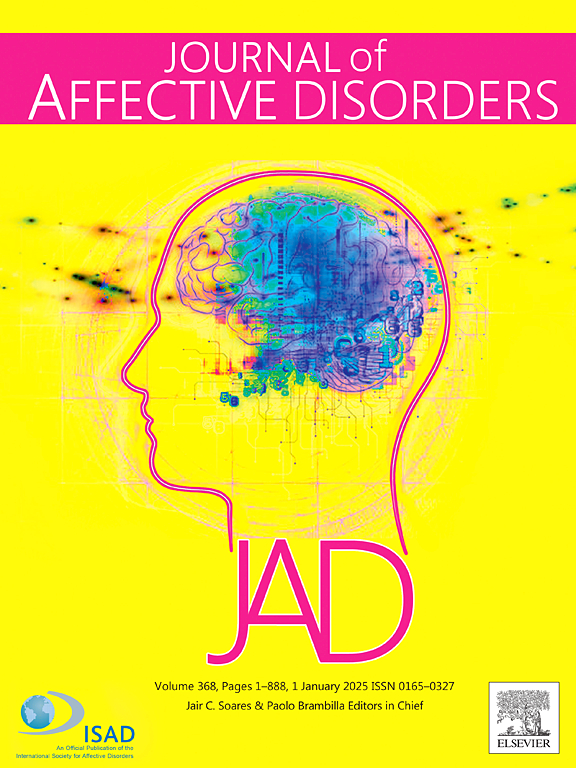Latent types of cognitive emotion regulation strategies among middle school students in China and its effect on depressive symptoms
IF 4.9
2区 医学
Q1 CLINICAL NEUROLOGY
引用次数: 0
Abstract
Objective
To explore the latent categories of cognitive emotion regulation strategies among middle school students in China and their effect on depressive symptoms.
Methods
The 535 (13.51 ± 0.93 years; 55.33 % males, 44.67 % females) middle school students from southwestern regions in China were recruited using Cognitive Emotion Regulation Questionnaire-Chinese Version and Patient Health Questionnaire-9. Correlation analysis, latent profile analysis and Bolck-Croon-Hagenaars (BCH) analysis were used to explore the latent categories of cognitive emotion regulation strategies and to analyze the relationship between latent categories and depressive symptoms.
Results
The depressive symptoms prevalence among middle school students was 30.47 %. There are four latent types of cognitive emotion regulation strategies: weak cognitive emotion regulation strategy (Weak CERS), high positive cognitive emotion regulation strategy (High Positive CERS), moderate and slightly negative cognitive emotion regulation strategy (Moderate and Slightly negative CERS) and high negative cognitive emotion regulation strategy (High Negative CERS). The BCH analysis shows the scores of depressive symptoms are significantly different among four profiles of CERQ-C (Wald χ2 = 173.04, p < 0.001) and the scores of depressive symptoms are obviously different between the four profiles (Wald χ2 = 4.67–171.37, ps < 0.05) except between profile 2 and 3 (Wald χ2 = 1.376, p > 0.05).
Conclusion
The level of depressive symptoms among middle school students from southwestern regions in China is relatively high, and their cognitive emotion regulation strategies can be divided into four types, having significant effects on depressive symptoms.
求助全文
约1分钟内获得全文
求助全文
来源期刊

Journal of affective disorders
医学-精神病学
CiteScore
10.90
自引率
6.10%
发文量
1319
审稿时长
9.3 weeks
期刊介绍:
The Journal of Affective Disorders publishes papers concerned with affective disorders in the widest sense: depression, mania, mood spectrum, emotions and personality, anxiety and stress. It is interdisciplinary and aims to bring together different approaches for a diverse readership. Top quality papers will be accepted dealing with any aspect of affective disorders, including neuroimaging, cognitive neurosciences, genetics, molecular biology, experimental and clinical neurosciences, pharmacology, neuroimmunoendocrinology, intervention and treatment trials.
 求助内容:
求助内容: 应助结果提醒方式:
应助结果提醒方式:


